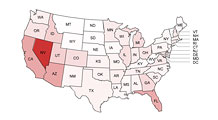I’ll admit it. Despite the great time with the family over the holidays, the excitement of reflecting on the year’s achievements, and planning for an incredible 2010 with my real estate business, I’ve been feeling a little overwhelmed over the past few days.
I’m sure you can relate to the feeling. Those times where you feel there is just too much to do, you have a million thoughts running through your mind simultaneously, and you have this underlying sense of being “stuck”. It’s not a good feeling and it’s highly unproductive.
I thought I’d help by providing some quick tips on how you can get over that feeling of being overwhelmed. These are things that have helped me personally to go from “stuck” to moving forward in my real estate business (and this can of course be useful outside of business):
- Put things in perspective (i.e. look at the brighter side of things). Take a moment to reflect and/or write down some of your accomplishments and what you’ve overcome – you’ll appreciate where you are and will also realize that in the grand scheme of things, this “endless to-do list” is not the end of the world! It can be tackled. You may even want to talk it out with a trusted friend or advisor who always helps you see the brighter side.
- Write it down. If you have a million thoughts running through your head, you’ll feel a great sense of relief when you can at least get them down on paper.
- Break it down. Once you’ve written down those thoughts and that seemingly endless list of things to do, categorize and prioritize.
- Take one step at a time and enjoy the experience of completion. Even after you break it down, you still may feel like its just too much to do. Remember that you can only do one thing at a time. Complete just one thing and you’ll be motivated to complete another. One step at a time.
- Delegate. Remember you don’t have to do it all. Divvy out tasks that can be done easily be others, even if your only affordable resource is a willing spouse or child.
- Set a timer. One of my friends shared this one with me. To ensure she can stay on target and not be distracted, she’ll set a timer to complete the task and stay focused on that one task during that specified time.
- Take short breaks and treat yourself for even your small accomplishments. This works wonders for me personally. I give myself a treat whenever I complete a few items on my prioritized to-do list. That treat can be whatever makes you happy – catching up on some reading, calling a friend, watching TV, etc, but the idea is to make it a short break (15-30 minutes) and then get back to work!
- Under promise and over deliver. You’ll feel much better and garner more goodwill with your clients/customers, co-workers, etc. when you can promise only on what you know for sure you can do and then – if time and motivation level permits – work your tail off to give more.
- Learn how to say “No”. This doesn’t just apply to saying “No” to others…sometimes you need to say “No” to yourself!














